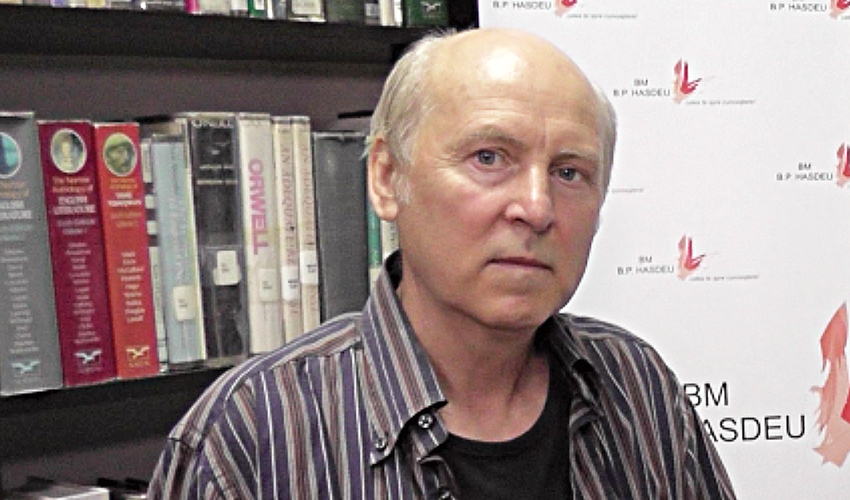
Mircea Baciu
According to the National Bank of Moldova, in the first quarter of 2025, the housing price index increased by 18.4% quarter-on-quarter and by 35.4% in annual terms. For new buildings, the growth amounted to 20.6% over the quarter, “secondary” went up in price by 17.4%.
At the same time, the market experienced a sharp drop in the number of transactions, down 28% YoY in Q1 2025 and 65% in Q2. This indicates a combination of overheated prices and weakening real demand.
Explosive price growth in early 2025
Housing Price Index (RPPI) for Q1 2025: +18.4% QoQ and +35.4% YoY, aggregate value 211.7. On the primary side, a quarterly jump of +20.6%, on the secondary side +17.4%. These are the official statistics of the NBM.
According to the Acces Imobil index, the average price of apartments in Chisinau by the end of 2024 reached ≈1,540 €/m² (historical maximum).
Local publications record a record price jump in Q1 2025 (new buildings up to ~1,906 €/m², +20.6% q/q).
Why did prices rise?
- Cheap and affordable mortgages/programs: increased access to financing (including the state program “Prima Casa Plus”) has fueled demand, as noted by the NBM and the media.
- Constricted supply of new buildings: after 2022-2023, the construction activity has slowed down; a number of surveys emphasized that the supply lags behind the demand, which reinforces the price increase.
- Migration/urbanization and buyer inflows: demand is concentrated in Chisinau (including internal migration and part of external demand), increasing pressure on prices in the capital.
- General macro environment: economic recovery, credit growth (mortgages), inflation expectations indirectly support nominal prices.
- Real estate as a means of keeping savings: housing is the main thing that saves citizens’ savings from inflation.
How to make housing affordable?
International experience in regulating sales and fighting speculative sales helps to find the answer. Let’s analyze the tax policies of Romania and Ukraine.
Ukraine uses tax policy to limit speculative resales:
- 0% tax on the first sale in a year and ownership of more than 3 years;
- 6.5% – for possession of less than 3 years or repeated sales in a year;
- 19.5% – for non-residents when holding for less than 3 years.
Romania applies a simple scale:
- 3% of the transaction amount for possession of 3 years or less;
- 1% – for possession of less than 3 years.
The tax is withheld by the notary at the conclusion of the transaction.
Ukraine is oriented to support long-term ownership and real buyers: zero rate is possible, but in other cases – relatively high tax burden.
Romania offers the simplest and lowest taxation system possible: fixed 1% and 3% of the price, with no complicated calculation of profit, and actual exemption in certain situations.
Measures for Moldova
Measures by the Mayor’s Office and changes in land policy
Measure 1. Auction of small plots (0.5 ha).
Mechanism: City Hall forms a pool of city land, divides it into lots of 0.5 ha and holds open auctions with admission only for legal entities and individual enterprises with proven construction experience ≤ 10,000 m².
Effect:
- Elimination of the monopoly of large developers;
- attracting small and medium-sized construction companies to the market;
- increase in supply and diversity of projects.
Implementation period: the first tenders – 6-9 months after the approval of the regulations.
Risk: fragmented development without integrated infrastructure – solved through the creation of unified urban planning standards.
Measure 2. New urban development plan with sale of plots on the city border or in the municipality.
Mechanism: Reclassification of agricultural land in the suburbs into a residential zone, allocation of large neighborhoods (20-30 hectares), which are divided into sections for different developers, but with a unified infrastructure plan.
Effect:
- Reduction of land shortage in the city limits;
- containment of land prices in the center;
- redistribution of demand.
Timeframe: 1-2 years to prepare plans and communications.
Risk: in the absence of infrastructure financing, new districts may remain “fields with high-rise buildings” (this is a problem for the image of the Mayor’s Office).
Measure 3: Create new neighborhoods with turnkey infrastructure.
Mechanism: The Mayor’s Office itself, or together with investors, builds roads, communications, social facilities (schools, kindergartens, medical centers) before the construction of housing.
Effect:
- The attractiveness of the suburbs grows;
- young families get affordable housing with amenities;
Timeframe: 2-5 years for a full-fledged neighborhood.
Risk: high cost of the initial phase.
Support of the state and creation of a form of cooperation between the state and the developer is necessary.
Measure 4: Simplify and accelerate the issuance of construction permits.
Goal: Reduce bureaucratic barriers and the time required for a developer to start work, while maintaining quality control and compliance with urban planning regulations.
Proposals: “Single window” – all approvals (town-planning plan, grid connection, environmental impact statement) are processed through one electronic portal.
Timeframes: maximum timeframes clearly established by law:
- Up to 30 calendar days for objects up to 5,000 m²;
- up to 60 days for large facilities.
Electronic interaction with the municipality – elimination of personal visits and paper references.
The principle of “tacit consent” – if the authority has not given a reasoned refusal within the deadline, the permit is considered to have been issued.
Simplified document package for small projects (construction and reconstruction) – reduced list of requirements for construction of up to 3-5 floors.
Expected effect:
- Acceleration of project launch by 3-6 months;
- reduction of developers’ costs on bureaucracy and interest on loans;
- increase in housing supply, especially in the affordable construction segment.
Risks and control measures:
- risk of lower quality of inspections – we need a clear online register of projects with open access to documentation;
- risk of corruption in “accelerated” procedures – we need digitalization and automation of approvals.
State and government measures
Measure 1: Modernization of the “Prima Casa” program.
Mechanism:
- Limit participation only for the purchase of housing up to 100 m² and with a price not exceeding the established limit;
- prioritize families with children and young professionals;
- link the issuance to regions with active new construction;
- new neighborhoods, housing in municipalities.
Effect:
- Support for real buyers;
- redirecting demand from the center to new districts (this is important).
Risk: without increasing supply, may drive up prices again.
Need offers!
Measure 2: Tax on quick resale (following the example of Ukraine).
Mechanism: Establish a 6-10% tax on the sale of housing from the value of the property owned for less than 3 years.
For example:
- after one year – 6%
- in 2 years – 3%
- in 3 years 1.5%
Exceptions – inheritance, donation between close relatives, sale of the only housing in case of change of residence.
Effect:
- Reduced speculative transactions;
- more stable market.
Risk: Reduced liquidity for those who sell for objective reasons.
Measure 3: Joint projects between the state and builders (developers) through public-private partnerships.
Goal: Launch housing construction with government participation to accelerate the expansion of supply and create socially affordable apartments without overheating the market.
Possible forms of cooperation:
- Transfer of land on long-term lease or free of charge under the condition of construction. The state or municipality provides a plot of land for construction without an auction. The developer undertakes to build the project and transfer to the state a certain percentage of apartments (e.g. 15-30%) for a social program (“Prima Casa”, housing for young families, resettlement from the emergency fund).
- Infrastructure subsidization. The state assumes the costs of roads, utilities, schools, kindergartens. The developer builds residential buildings and sells part of the apartments at market price and part at a subsidized price.
- Mixed financing. A joint fund where the state contributes land or funds, and the developer contributes money and project implementation.
Profits are distributed in proportion to the contributions.
Advantages:
- rapid growth of construction volumes in the affordable housing segment;
- attraction of private investments in social projects without overburdening the budget;
- control of prices for a part of housing due to state participation.
Risks:
- Risk of delayed deadlines (need clear penalties and conditions in the contract);
- overestimates (we need a mandatory independent expertise);
- corruption risks (a transparent tender for developers’ participation is needed).
Expected effect
With comprehensive implementation of these measures within 3-5 years:
- price growth will stabilize within 3-5% per year (instead of jumps of 15-30%);
- the share of speculative transactions will decrease by 20-30%;
- 10-15 new developers of small and medium segment will enter the market;
- the share of new neighborhoods in the sales volume will grow from 5-7% to 20-25%.
Conclusion
Moldova can avoid further market overheating if it synchronizes land policy and tax regulation. Ukraine has shown that a quick resale tax works. Romania – that simplicity and low rates simplify administration.
For Moldova, it is important to combine both approaches, complemented by an active urban development strategy.
- Combining the efforts and capabilities of the state and mayoralties;
- open and active work with business, constant dialog.
It is important to take into account that construction is the main multiplier of Moldova’s economic development.
Mircea Baciu, entrepreneur













